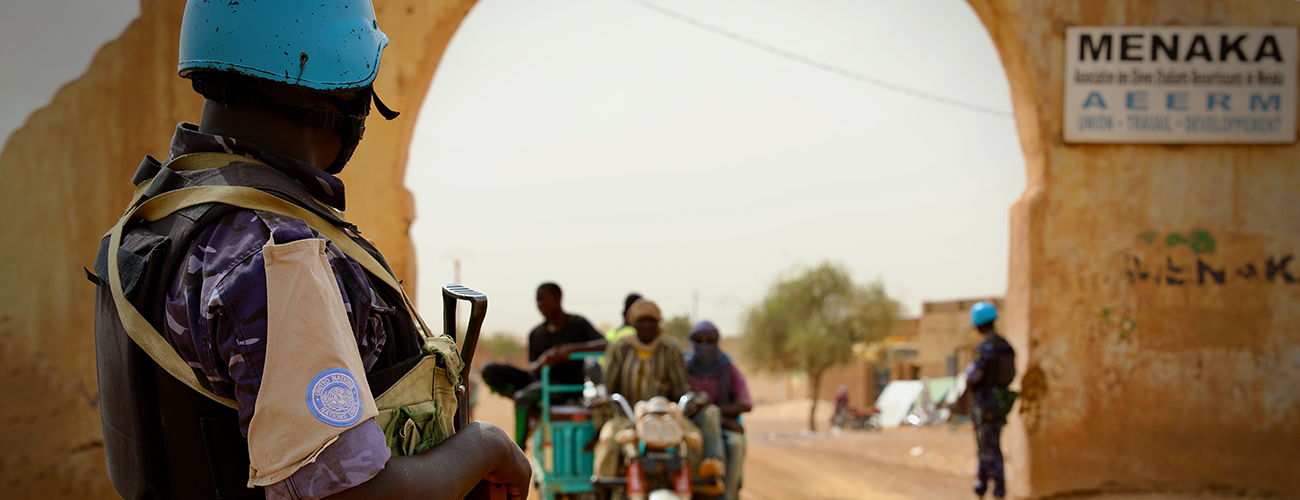UN Police patrol Menaka region in northeastern Mali. (UN Photo/Gema Cortes)
Conventional arms control and disarmament efforts have historically been framed as a humanitarian cause to limit human suffering. However, activities with an arms control component have only featured to a limited extent within the protection of civilians (POC) mandates of United Nations peace operations. Both issues feature on the agenda of the UN Security Council, which mandates missions, but the linkages between the two have not been well explored at the policy, strategic, and operational levels.
Produced in conjunction with the United Nations Institute for Disarmament Research, this brief provides an analysis of the actual, and potential, contribution of conventional arms control and related activities to POC within the context of UN peace operations—both peacekeeping operations and special political missions. There has been limited research conducted on this topic, and it has been addressed in only a cursory manner in relevant policies, guidelines, and strategies.
This paper therefore attempts to demonstrate the existing linkages between these two mandated tasks, as well as to pinpoint some of the barriers and challenges to why arms control has not featured more fully within the POC efforts of missions. It then identifies relevant entry points based on concrete examples of how arms control-related activities can be better leveraged by UN peace operations to ensure the more effective protection of civilians.








